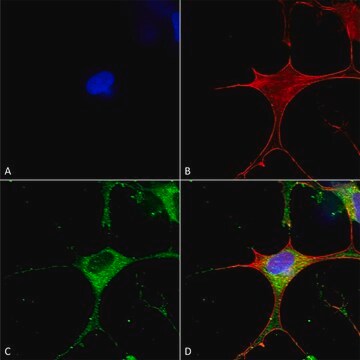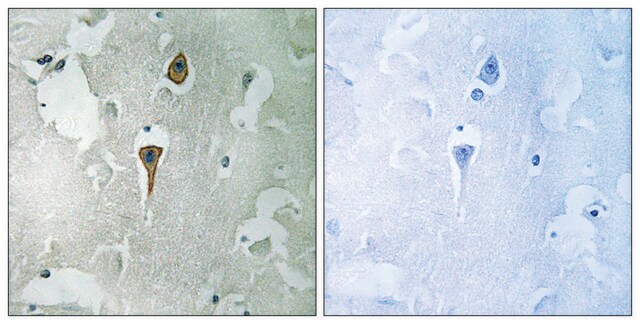05-432
Anti-NR1 Antibody, CT
Upstate®, from mouse
Synonim(y):
Grin1, NMDA R1 receptor C1 cassette, glutamate receptor, ionotropic, N-methyl D-aspartate 1
Wybierz wielkość
Wybierz wielkość
About This Item
IP
WB
immunoprecipitation (IP): suitable
western blot: suitable
Polecane produkty
pochodzenie biologiczne
mouse
Poziom jakości
forma przeciwciała
purified immunoglobulin
rodzaj przeciwciała
primary antibodies
klon
monoclonal
reaktywność gatunkowa
rat
reaktywność gatunkowa (przewidywana na podstawie homologii)
human, mouse
producent / nazwa handlowa
Upstate®
metody
immunocytochemistry: suitable
immunoprecipitation (IP): suitable
western blot: suitable
izotyp
IgG
numer dostępu NCBI
numer dostępu UniProt
Warunki transportu
wet ice
docelowa modyfikacja potranslacyjna
unmodified
informacje o genach
human ... GRIN1(2902)
rat ... Grin1(24408)
Opis ogólny
Specyficzność
Immunogen
Zastosowanie
4 μg of a previous lot immunoprecipitated NR1 from 500mg of rat brain microsomal protein preparation.
Immunocytochemistry:
An independent laboratory has shown positive staining in QT-6 cells, transfected to express NR1, which were fixed with 4% paraformaldehyde/4% sucrose in PBS and in nontransfected cultured rat neurons.
Note: Do not boil the microsomal preparation. Incubate at room temperature for 30-45 minutes.
Jakość
Western Blot Analysis:
0.5-2 μg/mL of this lot detected NR1 from 20 μg of rat brain microsomal protein preparation (Catalog # 12-144).
Opis wartości docelowych
Postać fizyczna
Przechowywanie i stabilność
Inne uwagi
Informacje prawne
Nie możesz znaleźć właściwego produktu?
Wypróbuj nasz Narzędzie selektora produktów.
Kod klasy składowania
10 - Combustible liquids
Klasa zagrożenia wodnego (WGK)
WGK 1
Certyfikaty analizy (CoA)
Poszukaj Certyfikaty analizy (CoA), wpisując numer partii/serii produktów. Numery serii i partii można znaleźć na etykiecie produktu po słowach „seria” lub „partia”.
Masz już ten produkt?
Dokumenty związane z niedawno zakupionymi produktami zostały zamieszczone w Bibliotece dokumentów.
Active Filters
Nasz zespół naukowców ma doświadczenie we wszystkich obszarach badań, w tym w naukach przyrodniczych, materiałoznawstwie, syntezie chemicznej, chromatografii, analityce i wielu innych dziedzinach.
Skontaktuj się z zespołem ds. pomocy technicznej








